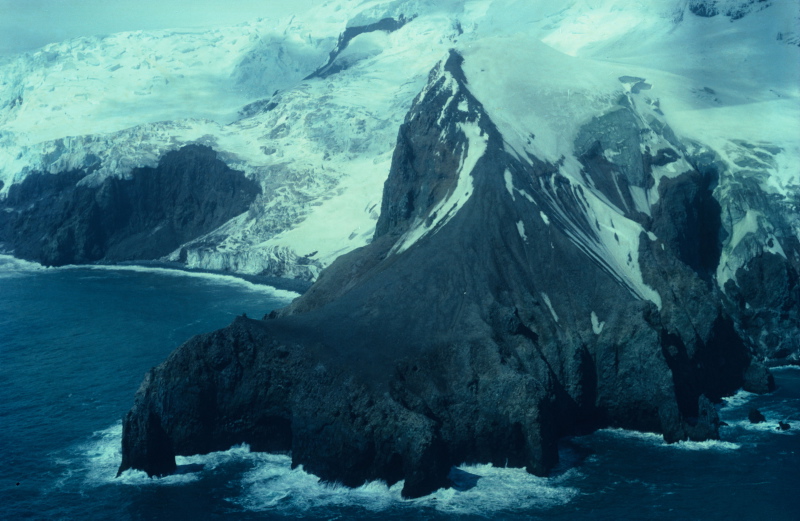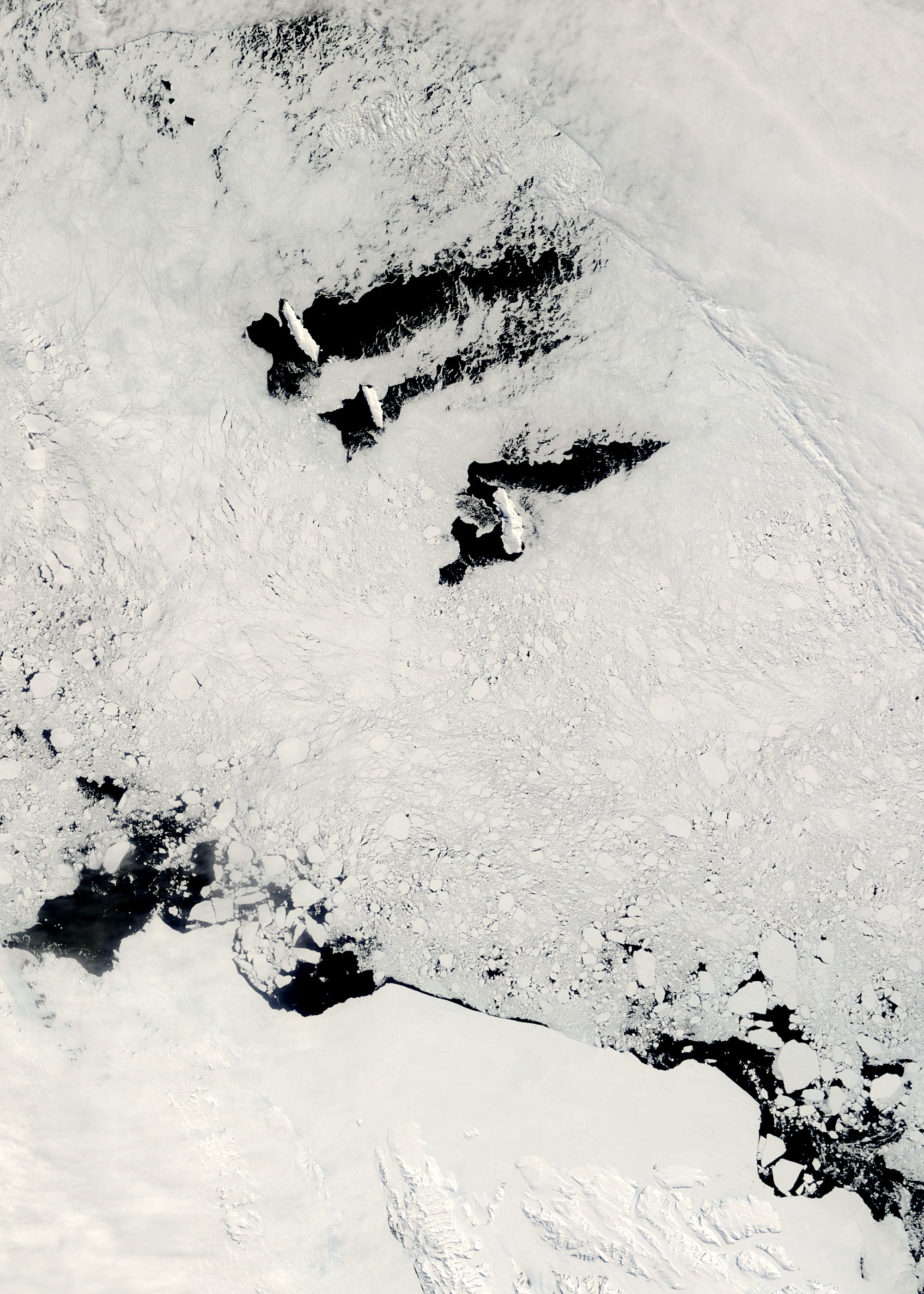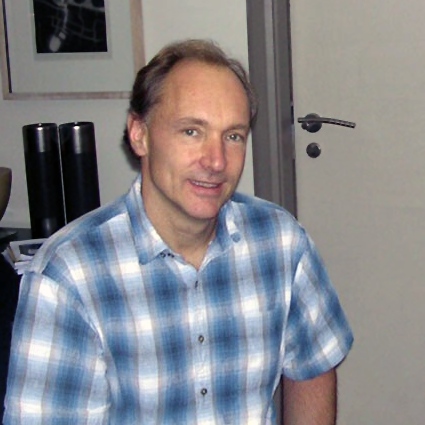|
Liz Thomas (scientist)
Liz Thomas is a British climate scientist, specializing in paleoclimatology. Her research mainly focuses on historic climate variability in the Antarctic, and she oversees the British Antarctic Survey's work on collecting and studying ice cores. Career Thomas primarily conducts research on paleoclimatology, making extensive use of ice cores to study historic climate change in the Southern Hemisphere, particularly the Antarctic After graduating from the University of Southampton, she obtained a Ph.D. in paleoclimatology through the Open University, joining the British Antarctic Survey as part of her doctoral work in the early 2000s. She subsequently became the director of the British Antarctic Survey's ice core group, which conducts research using ice core samples in the Arctic and Antarctic. In 2016 and 2017, she led the first-ever expedition to drill ice cores from sub-Antarctic islands, including Bouvet Island, the Balleny Islands, and Peter I Island. She has also conduct ... [...More Info...] [...Related Items...] OR: [Wikipedia] [Google] [Baidu] |
Climatology
Climatology (from Ancient Greek, Greek , ''klima'', "place, zone"; and , ''wiktionary:-logia, -logia'') or climate science is the scientific study of Earth's climate, typically defined as weather conditions averaged over a period of at least 30 years. This modern field of study is regarded as a branch of the atmospheric sciences and a subfield of physical geography, which is one of the Earth sciences. Climatology now includes aspects of oceanography and biogeochemistry. The main methods employed by climatologists are the analysis of observations and climate model, modelling of the physical processes that determine the climate. The main topics of research are the study of climate variability, Climate change, mechanisms of climate changes and modern climate change. Basic knowledge of climate can be used within shorter term weather forecasting, for instance about climatic cycles such as the El Niño–Southern Oscillation (ENSO), the Madden–Julian oscillation (MJO), the North Atl ... [...More Info...] [...Related Items...] OR: [Wikipedia] [Google] [Baidu] |
Balleny Islands
The Balleny Islands () are a series of uninhabited islands in the Southern Ocean extending from 66°15' to 67°35'S and 162°30' to 165°00'E. The group extends for about in a northwest-southeast direction. The islands are heavily glaciated and of volcanic origin. Glaciers project from their slopes into the sea. The islands were formed by the so-called Balleny hotspot. The group includes three main islands: Young, Buckle and Sturge, which lie in a line from northwest to southeast, and several smaller islets and rocks: *northeast of Young Island: Seal Rocks, Pillar *southeast of Young Island: Row Island, Borradaile Island (with Swan Base shelter hut) *south of Buckle Island: Scott Cone, Chinstrap Islet, Sabrina Islet (with Sabrina Refuge shelter hut), and the Monolith The islands are claimed by New Zealand as part of the Ross Dependency (see Territorial claims in Antarctica). Islands and rocks from north to south The islands' area totals and the highest point has b ... [...More Info...] [...Related Items...] OR: [Wikipedia] [Google] [Baidu] |
Alumni Of The University Of Southampton
This is a list of University of Southampton people, including famous officers, staff (past and present) and student alumni from the University of Southampton or historical institutions from which the current university derives. Officers Chancellors Hartley Institution and Hartley College Chancellors were known as principals before the formation of University College *1862–1873 Francis Bond *1873–1874 Charles Blackader *1875–1895 Thomas Shore *1896–1900 R. Stewart *1900–1902 Spencer Richardson University College Chancellors were known as presidents before the formation of university *1902–1907 Arthur Wellesley, 4th Duke of Wellington *1908–1908 Sir Alfred Wills *1910–1913 Claude Montefiore (Acting President) *1913–1934 Claude Montefiore *1934–1947 Lord John Seely *1948–1949 Lord Wyndham Portal *1949–1953 Gerald Wellesley, 7th Duke of Wellington University *1952–1962 Gerald Wellesley, 7th Duke of Wellington *1964–1974 Lord Keith Murray *1974� ... [...More Info...] [...Related Items...] OR: [Wikipedia] [Google] [Baidu] |
Women Antarctic Scientists
A woman is an adult female human. Prior to adulthood, a female human is referred to as a girl (a female child or adolescent). The plural ''women'' is sometimes used in certain phrases such as " women's rights" to denote female humans regardless of age. Typically, women inherit a pair of X chromosomes, one from each parent, and are capable of pregnancy and giving birth from puberty until menopause. More generally, sex differentiation of the female fetus is governed by the lack of a present, or functioning, SRY-gene on either one of the respective sex chromosomes. Female anatomy is distinguished from male anatomy by the female reproductive system, which includes the ovaries, fallopian tubes, uterus, vagina, and vulva. A fully developed woman generally has a wider pelvis, broader hips, and larger breasts than an adult man. Women have significantly less facial and other body hair, have a higher body fat composition, and are on average shorter and less muscular th ... [...More Info...] [...Related Items...] OR: [Wikipedia] [Google] [Baidu] |
Paleoclimatologists
Paleoclimatology (British spelling, palaeoclimatology) is the study of climates for which direct measurements were not taken. As instrumental records only span a tiny part of Earth's history, the reconstruction of ancient climate is important to understand natural variation and the evolution of the current climate. Paleoclimatology uses a variety of proxy methods from Earth and life sciences to obtain data previously preserved within rocks, sediments, boreholes, ice sheets, tree rings, corals, shells, and microfossils. Combined with techniques to date the proxies, the paleoclimate records are used to determine the past states of Earth's atmosphere. The scientific field of paleoclimatology came to maturity in the 20th century. Notable periods studied by paleoclimatologists are the frequent glaciations that Earth has undergone, rapid cooling events like the Younger Dryas, and the rapid warming during the Paleocene–Eocene Thermal Maximum. Studies of past changes in the environmen ... [...More Info...] [...Related Items...] OR: [Wikipedia] [Google] [Baidu] |
British Climatologists
British may refer to: Peoples, culture, and language * British people, nationals or natives of the United Kingdom, British Overseas Territories, and Crown Dependencies. ** Britishness, the British identity and common culture * British English, the English language as spoken and written in the United Kingdom or, more broadly, throughout the British Isles * Celtic Britons, an ancient ethno-linguistic group * Brittonic languages, a branch of the Insular Celtic language family (formerly called British) ** Common Brittonic, an ancient language Other uses *'' Brit(ish)'', a 2018 memoir by Afua Hirsch *People or things associated with: ** Great Britain, an island ** United Kingdom, a sovereign state ** Kingdom of Great Britain (1707–1800) ** United Kingdom of Great Britain and Ireland (1801–1922) See also * Terminology of the British Isles * Alternative names for the British * English (other) * Britannic (other) * British Isles * Brit (other) * Br ... [...More Info...] [...Related Items...] OR: [Wikipedia] [Google] [Baidu] |
Living People
Related categories * :Year of birth missing (living people) / :Year of birth unknown * :Date of birth missing (living people) / :Date of birth unknown * :Place of birth missing (living people) / :Place of birth unknown * :Year of death missing / :Year of death unknown * :Date of death missing / :Date of death unknown * :Place of death missing / :Place of death unknown * :Missing middle or first names See also * :Dead people * :Template:L, which generates this category or death years, and birth year and sort keys. : {{DEFAULTSORT:Living people 21st-century people People by status ... [...More Info...] [...Related Items...] OR: [Wikipedia] [Google] [Baidu] |
National Geographic Explorer
''National Geographic Explorer'' (or simply ''Explorer'') is an American documentary television series that originally premiered on Nickelodeon on April 7, 1985, after having been produced as a less costly and intensive alternative to PBS's '' National Geographic Specials'' by Pittsburgh station WQED. The first episode ("Herculaneum: Voices from the Past") was produced by WQED and featured long-time ''Explorer'' cameraman Mark Knobil, who is the few staff members with the franchise during all 24 seasons. The program is the longest-running documentary television series on cable television. Presented every Sunday from 5:00 pm to 8:00 pm, the original series was three hours in length, containing five to ten short films. Although the National Geographic Society had been producing specials for television for 20 years prior to ''Explorer'', the premiere of the series required an increase in production from 4 hours of programming a year to 156 hours. Tim Cowling and Tim Kelly were the ... [...More Info...] [...Related Items...] OR: [Wikipedia] [Google] [Baidu] |
Svalbard
Svalbard ( , ), also known as Spitsbergen, or Spitzbergen, is a Norway, Norwegian archipelago in the Arctic Ocean. North of continental Europe, mainland Europe, it is about midway between the northern coast of Norway and the North Pole. The islands of the group range from 74th parallel north, 74° to 81st parallel north, 81° north latitude, and from 10th meridian east, 10° to 35th meridian east, 35° east longitude. The largest island is Spitsbergen, followed by Nordaustlandet and . The largest settlement is Longyearbyen. The islands were first used as a base by the Whaling, whalers who sailed far north in the 17th and 18th centuries, after which they were abandoned. Coal mining started at the beginning of the 20th century, and several permanent communities were established. The Svalbard Treaty of 1920 recognizes Norwegian sovereignty, and the 1925 Svalbard Act made Svalbard a full part of the Kingdom of Norway. They also established Svalbard as a free economic zone and a ... [...More Info...] [...Related Items...] OR: [Wikipedia] [Google] [Baidu] |
Greenland
Greenland ( kl, Kalaallit Nunaat, ; da, Grønland, ) is an island country in North America that is part of the Kingdom of Denmark. It is located between the Arctic and Atlantic oceans, east of the Canadian Arctic Archipelago. Greenland is the world's largest island. It is one of three constituent countries that form the Kingdom of Denmark, along with Denmark and the Faroe Islands; the citizens of these countries are all citizens of Denmark and the European Union. Greenland's capital is Nuuk. Though a part of the continent of North America, Greenland has been politically and culturally associated with Europe (specifically Norway and Denmark, the colonial powers) for more than a millennium, beginning in 986.The Fate of Greenland's Vikings , by Dale Mackenzie Brown, ''Archaeological Institute of America ... [...More Info...] [...Related Items...] OR: [Wikipedia] [Google] [Baidu] |
Peter I Island
Peter I Island ( no, Peter I Øy) is an uninhabited volcanic island in the Bellingshausen Sea, from continental Antarctica. It is claimed as a dependency of Norway and, along with Bouvet Island and Queen Maud Land, composes one of the three Norwegian dependent territories in the Antarctic and Subantarctic. The island measures approximately , with an area of ; its highest point is the ultra-prominent, Lars Christensen Peak. Nearly all the island is covered by a glacier, and it is surrounded most of the year by pack ice, making it inaccessible during these times. There is little vertebrate animal life on the island, apart from some seabirds and seals. The island was first sighted by Fabian Gottlieb von Bellingshausen on 21 January 1821 and was named for Peter I of Russia. Not until 2 February 1929 did anyone set foot on the island, when Nils Larsen and Ola Olstad's Second ''Norvegia'' Expedition, financed by Lars Christensen, was successful. They claimed it for N ... [...More Info...] [...Related Items...] OR: [Wikipedia] [Google] [Baidu] |

.png)


.jpg)

